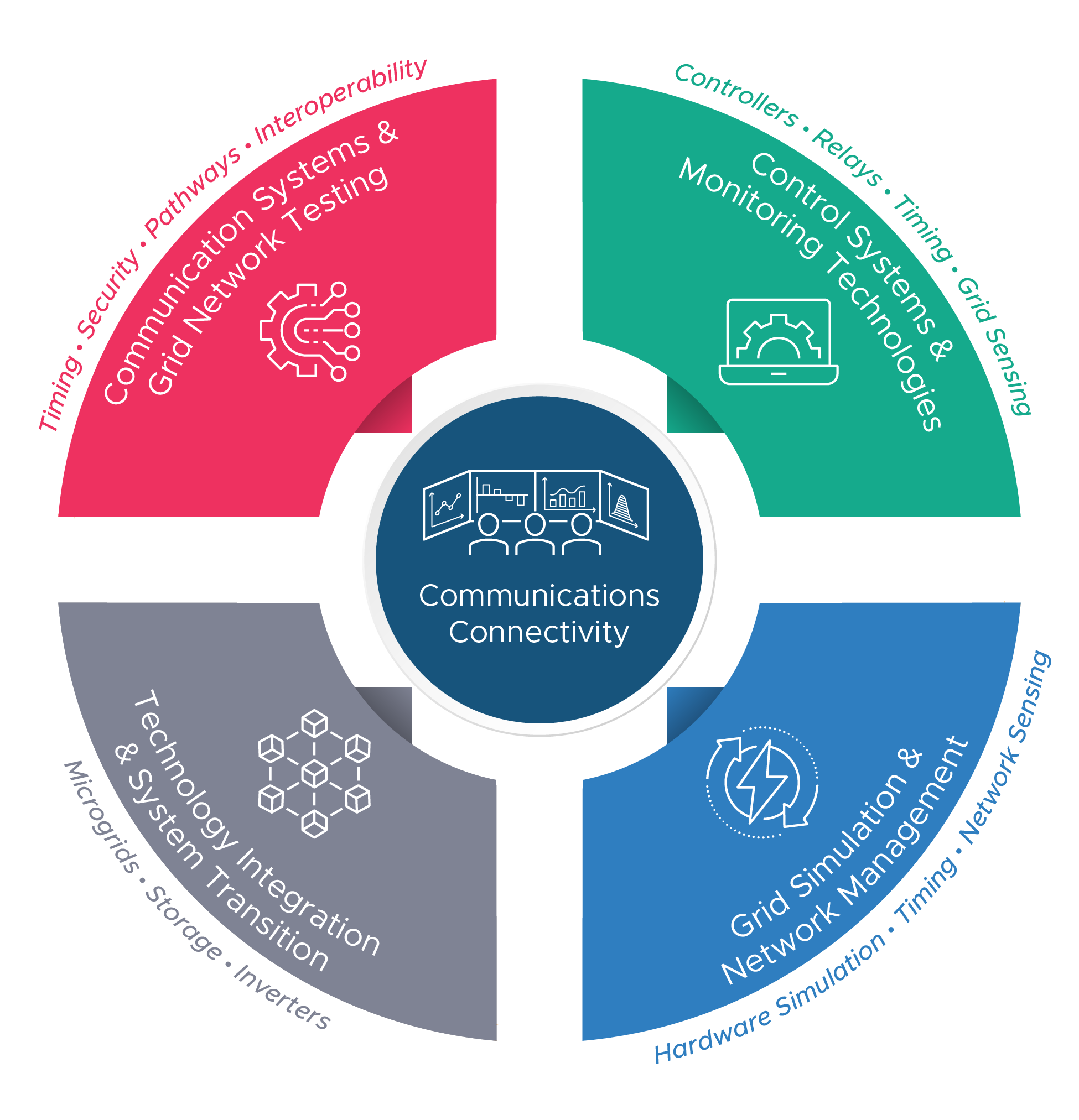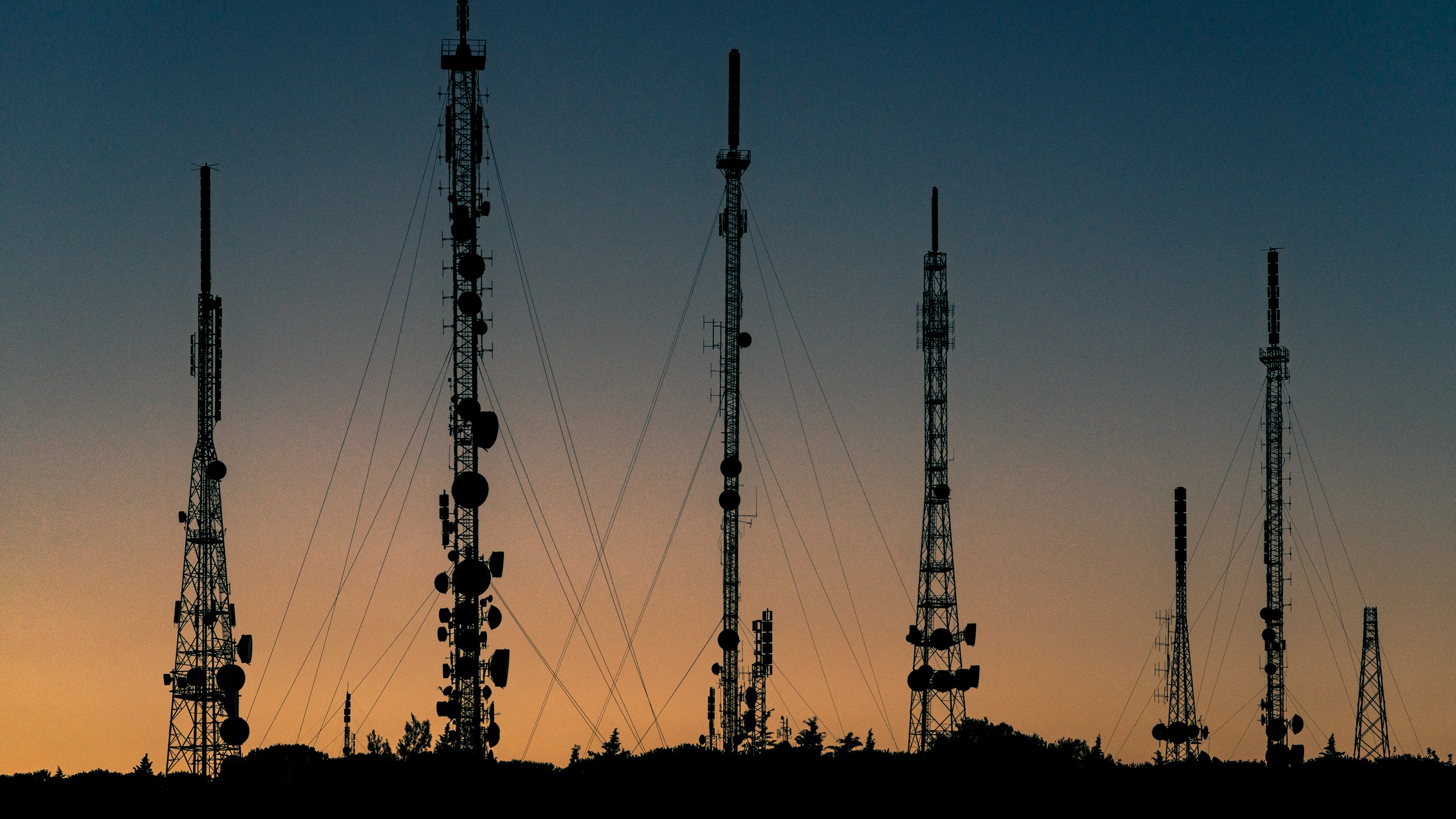About SPaRC
SPaRC is advancing secure grid communications through DOE-backed research, hands-on testing, and multi-laboratory collaboration. Grid reliability depends on communication systems that can withstand interference, tampering, and service disruptions. SPaRC helps ensure those systems are resilient, secure, and future-ready.
Leveraging a multi-national laboratory communication testbed, SPaRC develops and validates end-to-end secure communication architectures and technologies for the electric grid. These technologies span a range of transmission methods and protocols—and support critical data such as grid status and control messages.
Mission
The mission of SPaRC is to strengthen the security and reliability of grid communications by designing and testing secure, scalable communication architectures and assessing the associated technologies to enable resilient grid operations.
What SPaRC Does
SPaRC brings together leading experts in communication architecture, power systems, radio frequency engineering, signal processing, and data science to test and validate grid communication systems. The program focuses on three core areas:
- Grid Communication Testbed
A multi-laboratory platform that emulates real-world grid conditions and enables cross-sector partners to test new communication technologies. The platform leverages assets and experts at Idaho National Laboratory, Oak Ridge National Laboratory, Pacific Northwest National Laboratory, and Sandia National Laboratories. - Next-Generation Communications Experiments
SPaRC evaluates emerging technologies, protocols, and topologies under realistic conditions to improve security, performance, and adaptability for modern electric grid applications. - Education and Technical Assistance
The program engages with grid utilities, vendors, and regulators through training sessions, white papers, and technical reports. This outreach supports informed decisions on infrastructure investment and regulations.

Why It Matters
As grid operations become more data-driven and distributed, the need for secure, resilient communications is becoming increasingly urgent. SPaRC provides the tools, testing environments, and expertise needed to help energy sector stakeholders stay ahead of emerging risks and opportunities. The SPaRC team advances technologies and architectures that bridge innovation and reliability.
Key Partners


SPaRC’s initial team consists of the following members:
- DOE Office of Electricity
- Idaho National Laboratory
- Oak Ridge National Laboratory
- Pacific Northwest National Laboratory
- Sandia National Laboratories
These partners bring unique communications expertise and testing capabilities to the program, supporting testbed validation, system design, and policy-relevant research.
SPaRC is helping position the grid for tomorrow’s communication needs today.
Contact us Learn moreWhat SPaRC Offers
Grid Communications Testbed: A multi-laboratory platform to test and validate communications technologies in real-world grid environments.
Next-Generation Communications Experiments: Conducting experiments to evaluate new and existing communications technologies, protocols, and topologies for electric grid applications.
Education & Technical Assistance: Providing training, white papers, and technical reports.

